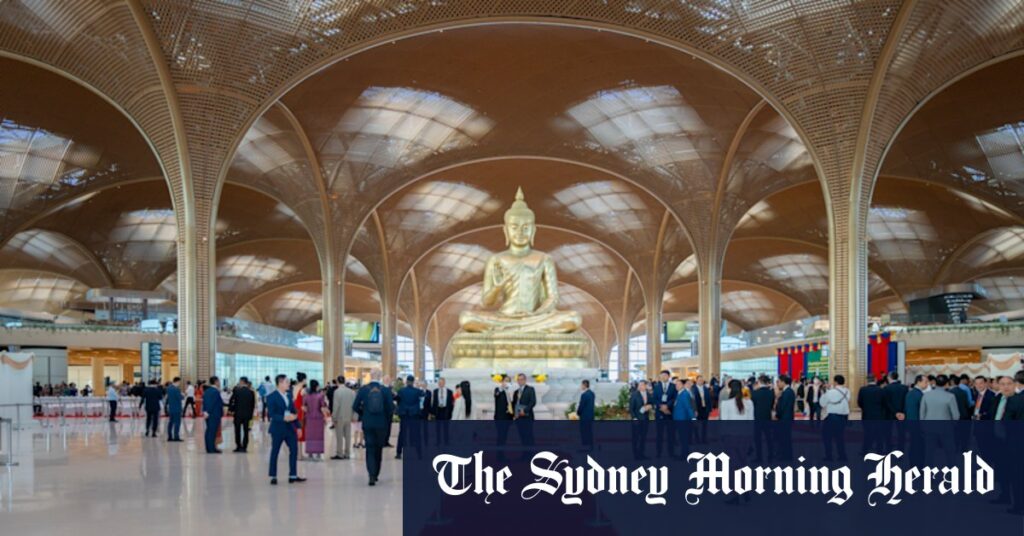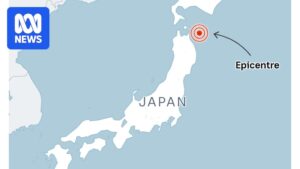
There’s an air of excitement at Phnom Penh’s newly inaugurated $3 billion transport hub, an international airport poised to transform Cambodia’s connectivity and economic landscape. On the final day of complimentary parking, locals flocked to explore this architectural marvel. Despite the congestion, with some taking up to three hours to cover the 20 kilometers from the city, the journey is expected to become smoother as the initial rush subsides.
The sprawling airport, designed to accommodate the world’s largest aircraft, including the Airbus A380, is set to significantly boost tourism and investment. With an initial capacity of 15 million passengers annually, projections indicate this could soar to 50 million by 2050. Construction began in 2019, and the airport officially opened last month, replacing the older Phnom Penh International Airport, which operated at just a third of the new facility’s capacity.
A Fusion of Design and Culture
Occupying 2,600 hectares, the airport exudes a resort-like ambiance, thanks to the visionary design by Britain’s Foster + Partners, renowned for their work on the Louvre in Abu Dhabi. The architecture seamlessly blends Khmer cultural elements with modern aesthetics, featuring a striking fluted exterior and an interior ceiling reminiscent of a Cambodian jungle canopy. Natural light floods through bamboo-patterned domes, enhancing the central building’s allure. A second wing is planned to complement the existing structure.
Energy sustainability is a key feature, with most power generated by an onsite solar farm. The decor, rich in soft light, gold, and bronze, is complemented by vertical gardens, rooftop greenery, and native Cambodian flora. A nine-meter golden Buddha statue, symbolizing peace and protection, stands as a welcoming sentinel.
Streamlined Travel Experience
Upon arrival, travelers are greeted by friendly staff, eager to showcase their new workplace. The check-in process is seamless, with options for both traditional counters and self-serve kiosks. Recent air service agreements, including one with Australia, hint at the possibility of direct flights between the two nations soon.
Security procedures are efficient, with smart gates facilitating a quick passage through passport control and immigration. Assistance is readily available, ensuring a smooth experience for all passengers.
Culinary and Leisure Delights
As a One World Alliance member, travelers can access the Plaza Premium First Lounge, offering a range of dining and bar options, as well as showers and massage services. The Plaza Premium Lounge is also available, providing a comfortable space to relax.
Exploring the airport reveals a dynamic art installation, “Birds Fly by Flapping Their Wings” by Cambodian artist Sopheap Pich, near the Brown Coffee café. Free, fast Wi-Fi and the Bodia Spa add to the airport’s allure, making it a destination in itself.
Implications and Future Prospects
The opening of Phnom Penh’s new airport marks a significant milestone in Cambodia’s development journey. By enhancing connectivity, it promises to attract more tourists and investors, potentially transforming the country’s economic landscape. As travel times improve and new routes open, the airport is set to become a central hub in Southeast Asia.
Experts suggest that the airport’s capacity to handle increased passenger volumes will be crucial in supporting Cambodia’s growth ambitions. The emphasis on sustainability and cultural integration in its design also sets a benchmark for future infrastructure projects in the region.
In conclusion, Phnom Penh’s new transport hub is more than just an airport; it is a symbol of Cambodia’s aspirations and a testament to its potential on the global stage. As the country continues to develop, this state-of-the-art facility will play a pivotal role in shaping its future.
★★★★½ – A transformative gateway to Cambodia’s future.






